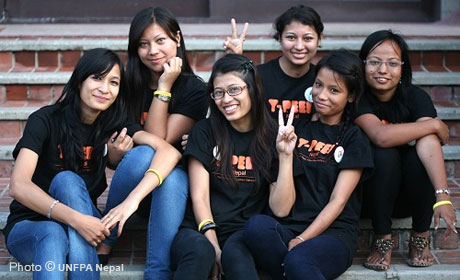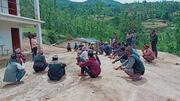Data Menu
-
Country Pages
-
Asie et Pacifique
- Afghanistan
- Bangladesh
- Bhoutan
- Cambodge
- Chine
- Inde
- Indonésie
- République islamique d'Iran
- République démocratique populaire lao
- Malaisie
- Maldives
- Mongolie
- Myanmar
- Népal
- Pakistan
- Papouasie-Nouvelle-Guinée
- Philippines
- Sri Lanka
- Thaïlande
- Timor oriental
- Viet Nam
-
Europe de l'Est et Asie centrale
- Albanie
- Arménie
- Azerbaïdjan
- Bélarus
- Bosnie-Herzégovine
- Géorgie
- Kazakhstan
- Bureau du Kosovo
- Kirghizistan
- Moldavie, République de
- Macédoine du Nord
- Serbie
- Tadjikistan
- Türkiye
- Turkménistan
- Ukraine
- Ouzbékistan
-
États arabes
- Algérie
- Djibouti
- Égypte
- Iraq
- Jordanie
- Liban
- la Libye
- Maroc
- Oman
- Palestine
- Somalie
- Soudan
- République arabe syrienne
- Tunisie
- Yémen
-
Afrique orientale et australe
- Angola
- Botswana
- Burundi
- Comores
- République démocratique du Congo
- Érythrée
- Eswatini
- Éthiopie
- Kenya
- Lesotho
- Madagascar
- Malawi
- Maurice
- Mozambique
- Namibie
- Rwanda
- Seychelles
- Afrique du Sud
- Soudan du Sud
- Tanzanie, République unie de
- Ouganda
- Zambie
- Zimbabwe
-
Amérique latine et Caraïbes
- Argentine
- Bolivie, État plurinational de
- Brésil
- Chili
- Colombie
- Costa Rica
- Cuba
- République Dominicaine
- Équateur
- Salvador (Le)
- Guatemala
- Haïti
- Honduras
- Mexique
- Nicaragua
- Panama
- Paraguay
- Pérou
- Uruguay
- Venezuela, la République bolivarienne du
- Caribbean (multi-country)
-
Afrique de l'Ouest et du Centre
- Bénin
- Burkina Faso
- Cabo Verde
- Cameroun
- République Centrafricaine
- Tchad
- Congo
- Côte d'Ivoire
- Guinée équatoriale
- Gabon
- Gambie
- Ghana
- Guinée
- Guinée-Bissau
- Libéria
- Mali
- Mauritanie
- Niger
- Nigéria
- Sao Tomé-et-Principe
- Sénégal
- Sierra Leone
- Togo
-
Country Menu
- Accueil
- Les données
- Nepal

UNFPA Nepal
Active in Nepal since 1971, UNFPA has supported the health-sector programme, enhanced the national response to gender-based violence, and implemented the population and housing census. Today, programmes support the subnational capacity for planning and managing population, gender and reproductive health programmes, and strategies in districts that have made slow progress in achieving the goals of the International Conference on Population and Development (ICPD).
Data overview
View more
Population
Population par tranche d'âge, %
 Population âgée de 0 à 14 ans (en %)
Population âgée de 0 à 14 ans (en %) Population âgée de 15 à 64 ans (en %)
Population âgée de 15 à 64 ans (en %) Population aged 65+
Population aged 65+
Santé sexuelle et reproductive
Part des naissances encadrées par un personnel de santé qualifié, %, 2014-2019
 Part des naissances encadrées par un personnel de santé qualifié
Part des naissances encadrées par un personnel de santé qualifié
Planification familiale
Proportion of demand satisfied with modern methods, women aged 15-49, per cent, 2022
 Modern method
Modern method
Éducation
Total net enrolment rate, percent
Gender, Rights, and Human Capital
Pratiques nuisibles
Key results of Nepal in 2021
View more
Health services for sexual violence survivors
Essential health services were provided for survivors of sexual violence by at least 60 per cent of public health facilities
Logistics management information system
A logistics management information system was used for forecasting and monitoring sexual and reproductive health commodities
Multi-sector platforms
Platforms were established for dialogue on reproductive rights, fully engaging civil society, including faith-based and state actors
Fistula treatment
25Fistula repair surgeries provided with the support of UNFPA
Minimum Initial Services Package
281Health service providers and managers were trained on the minimum initial service package
Life skills programmes for girls
3,059Marginalized girls were reached with health, social and economic asset-building programmes
Advocacy platforms against harmful social norms
152Communities developed advocacy platforms to eliminate discriminatory gender and sociocultural norms which affect women and girls
Child, early and forced marriage
3,059Girls received, with support from UNFPA, prevention, protection services, and/or care related to child, early, and forced marriage
Community declarations on harmful practices
4Communities made public declarations to eliminate harmful practices, with support from UNFPA, including child, early and forced marriage and female genital mutilation
Demographic Dividend: Nepal
View more
Population Pyramid
females
males
Population in thousands
Espérance de vie
Total fertility rate
Select year range
Year: 2018
Note: Years 2017 to 2100 are projected data.
i
Source: United Nations, Population Division, World Population Prospects: 2017 Revision
Tableaux de bord disponibles pour Nepal
nouvelles
Actualités
Un an après le début de la pandémie, l’UNFPA estime que 12 millions de femmes ont connu une interruption de leur contraception, provoquant 1,4 million de grossesses non planifiées
On estime que 12 millions de femmes ont connu des perturbations de leurs services de planification familiale à cause de…
Actualités
Répondre aux besoins de planification familiale dans les centres de quarantaine du Népal
Lorsque Kabita Bhandari est arrivée dans un centre de quarantaine dans le district de Baitadi, à l’extrême ouest du…


Réseaux sociaux
Tweets from UNFPATürkiye